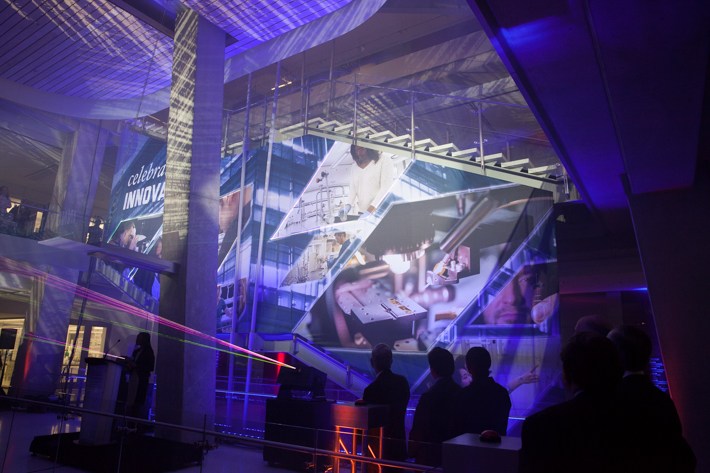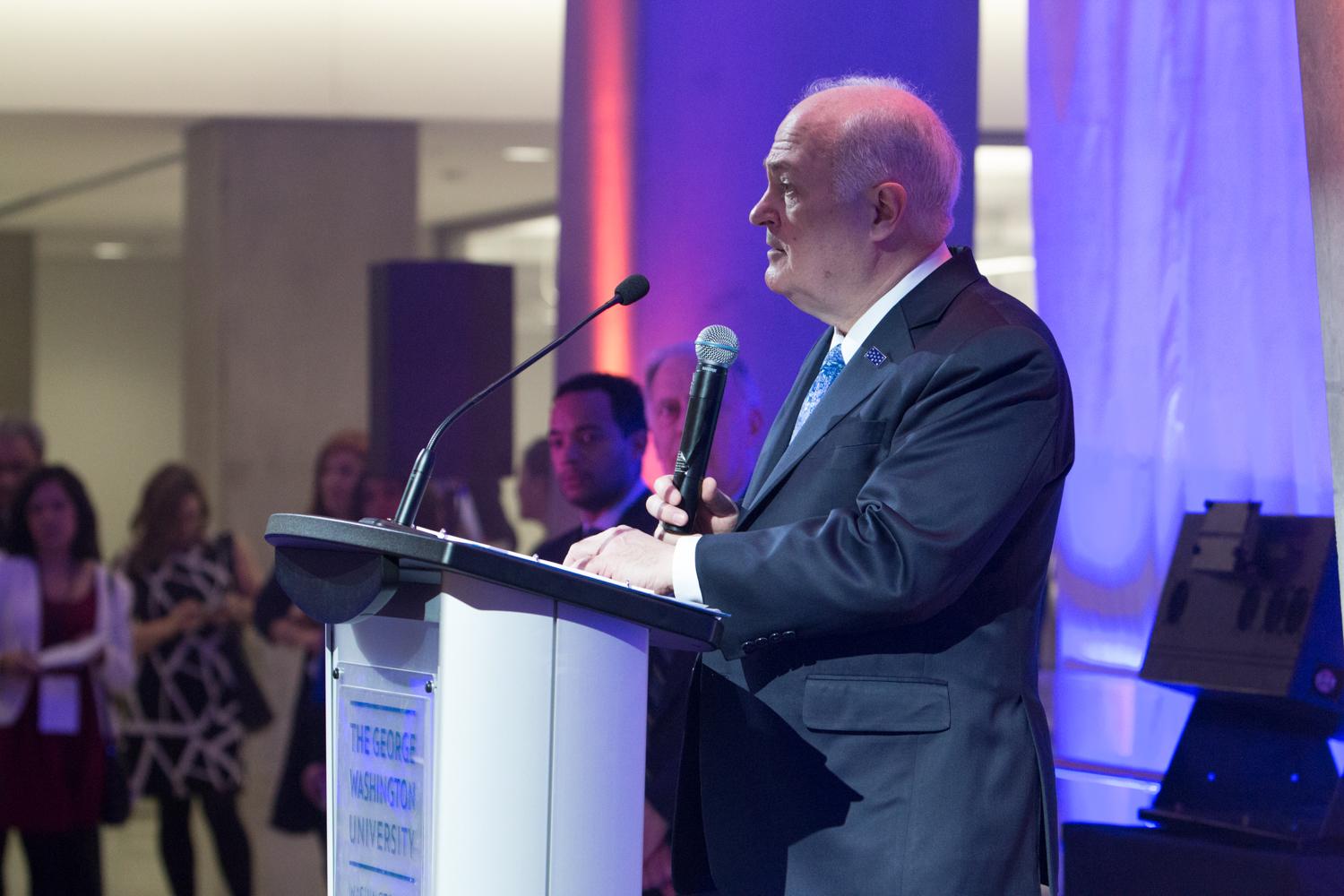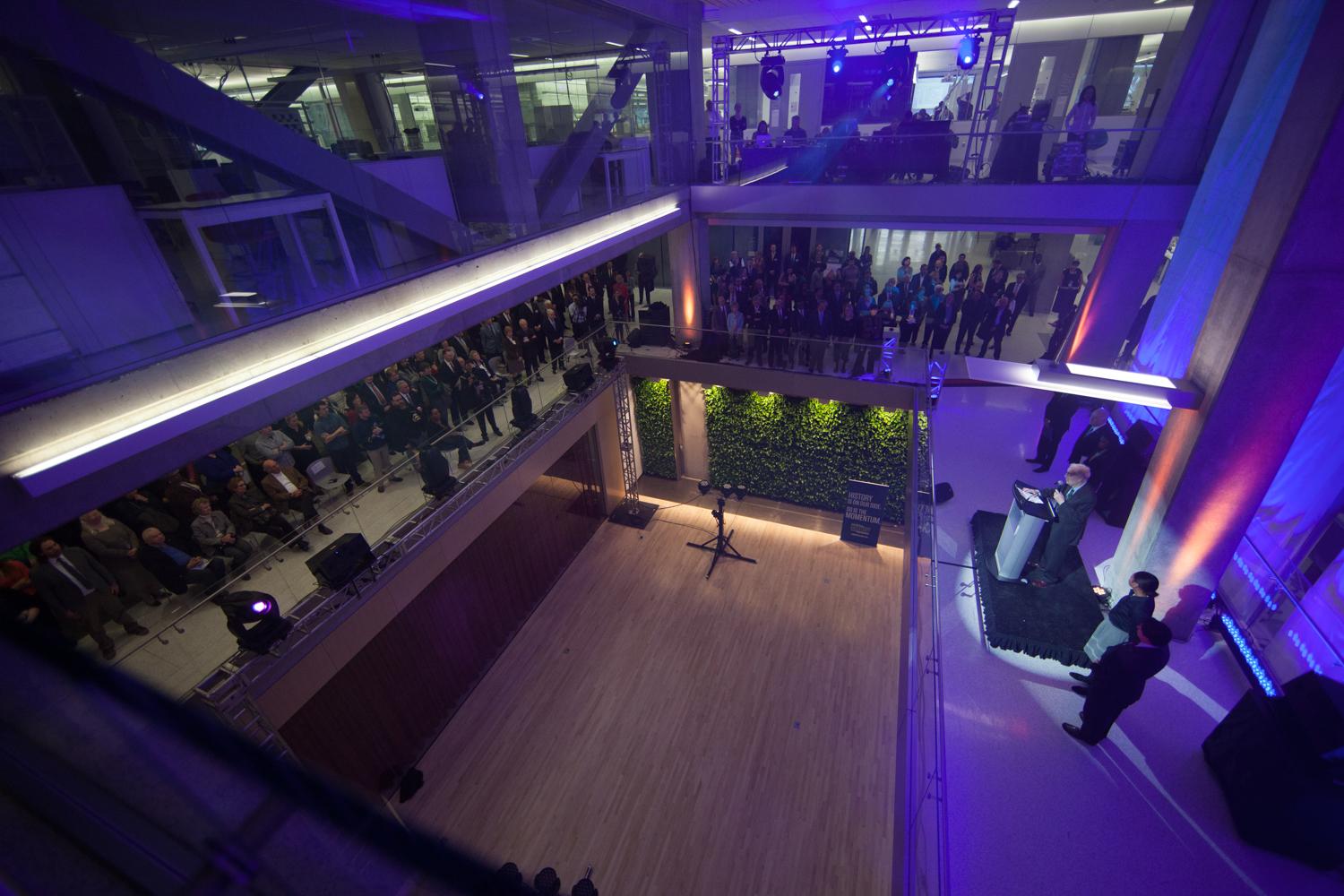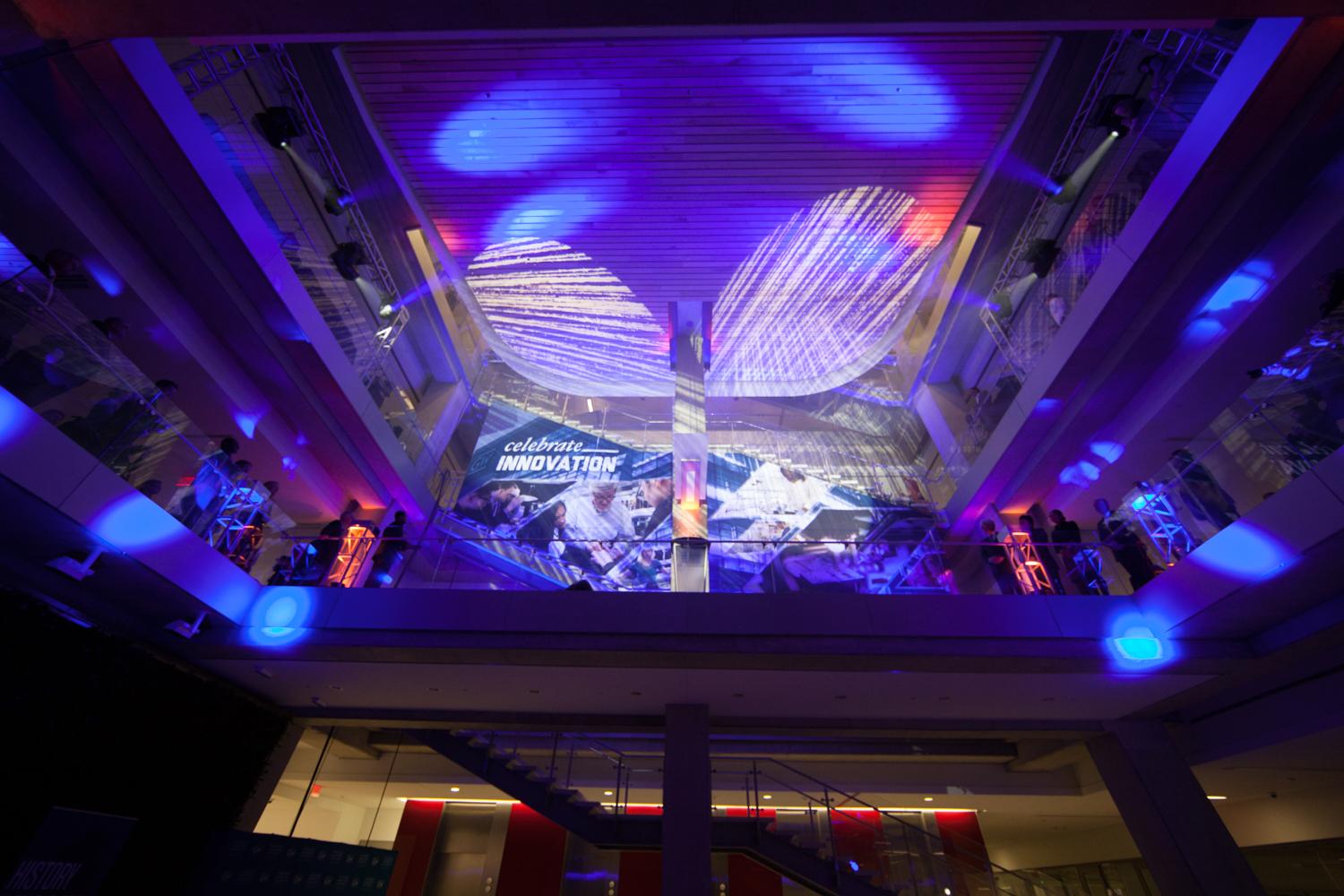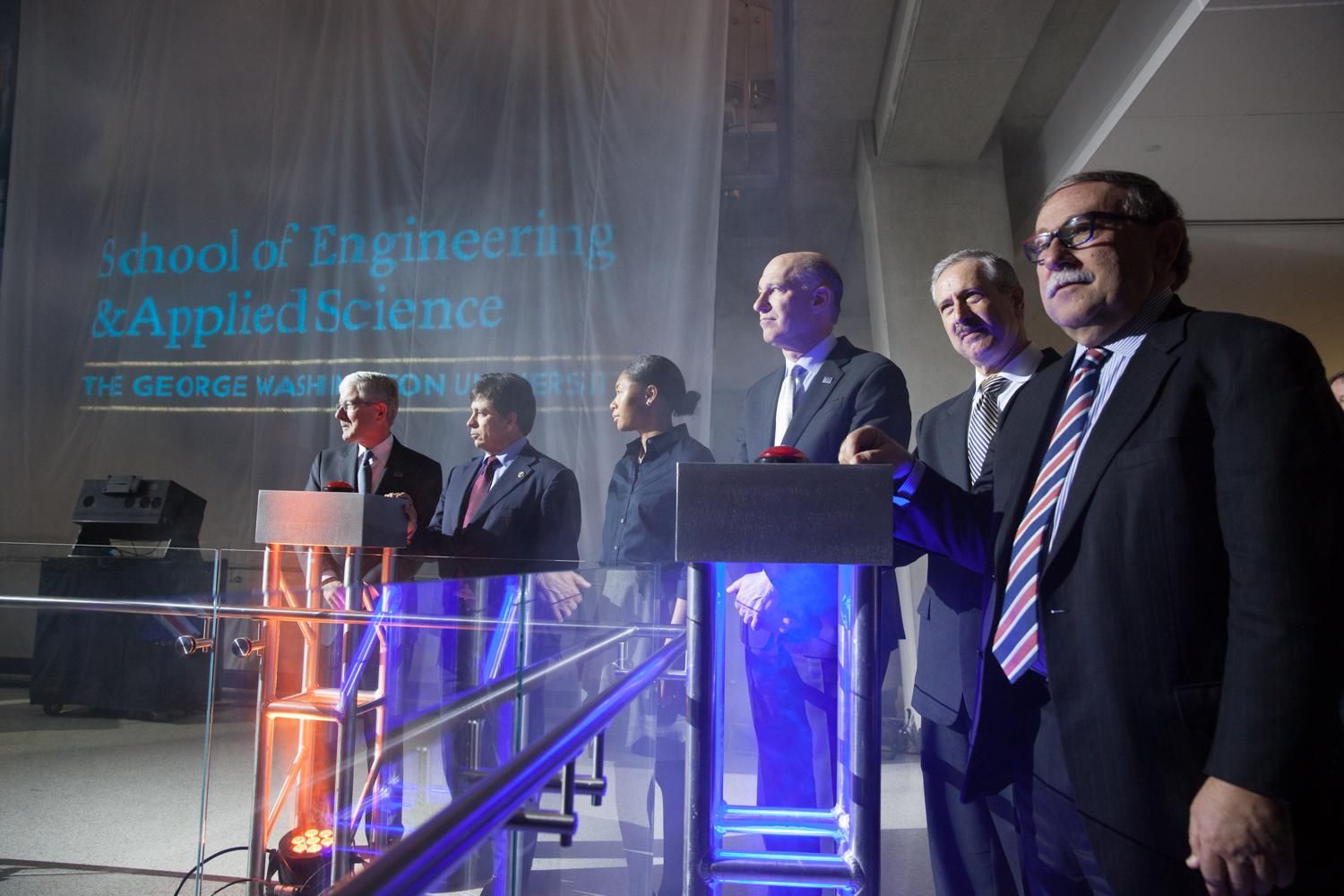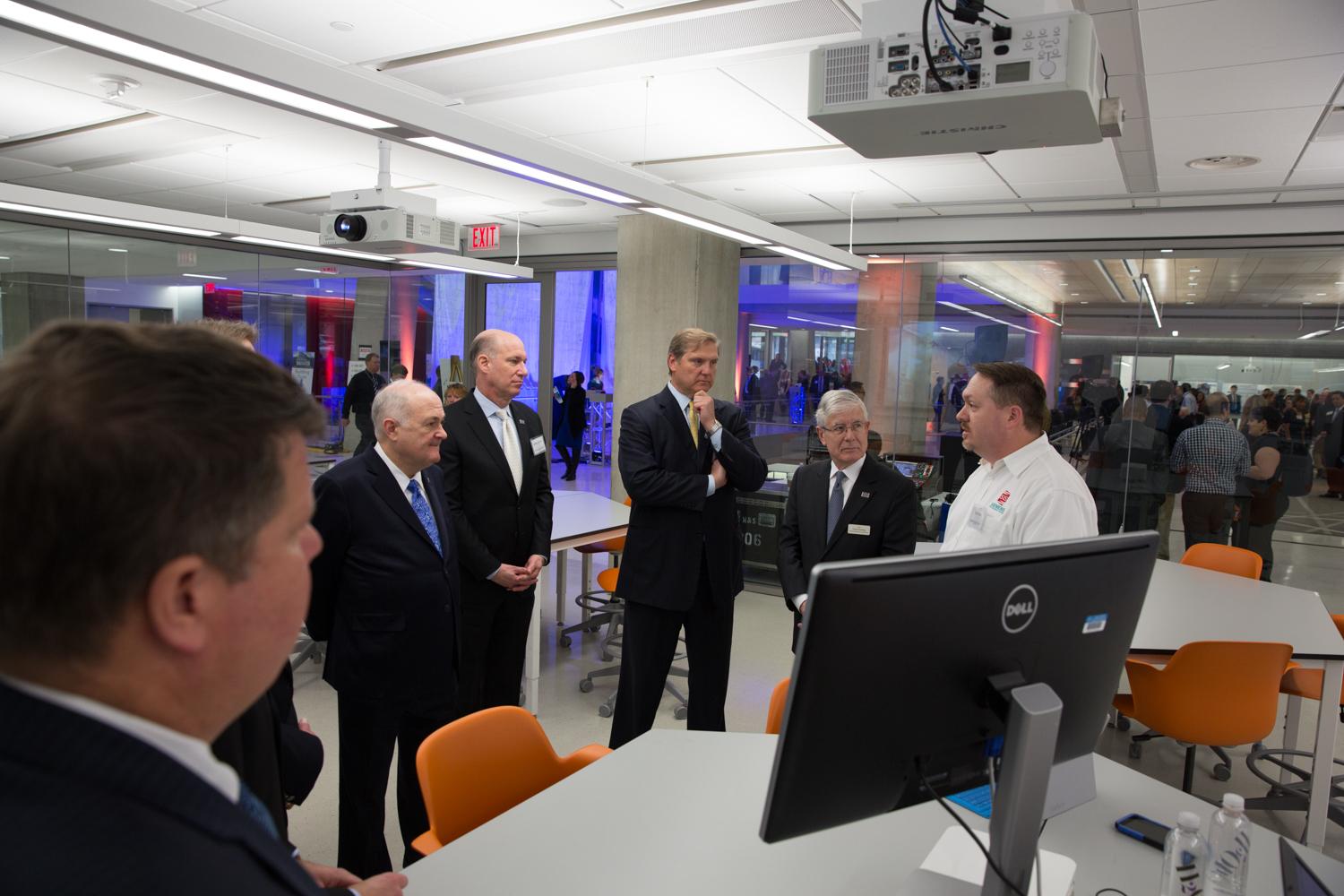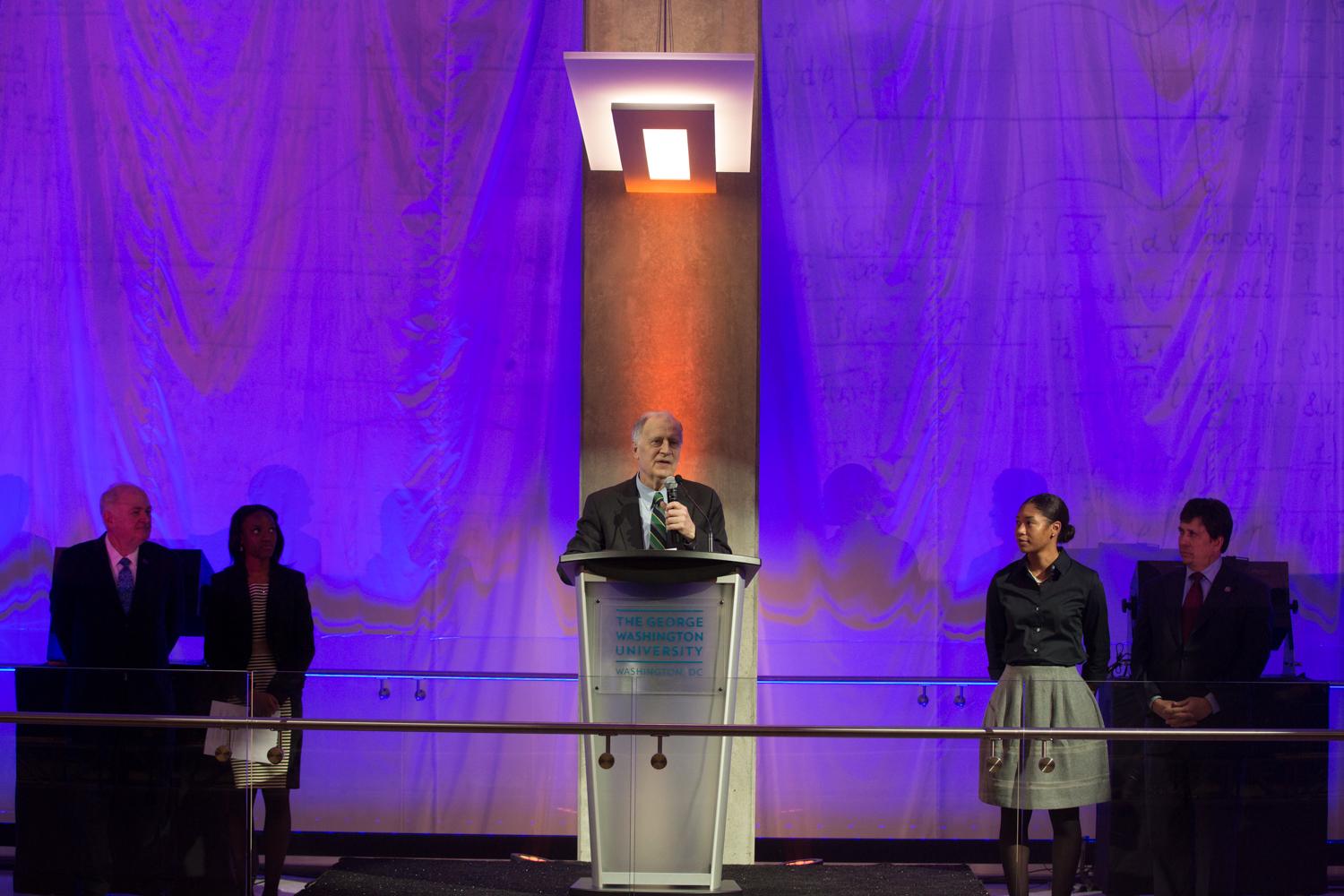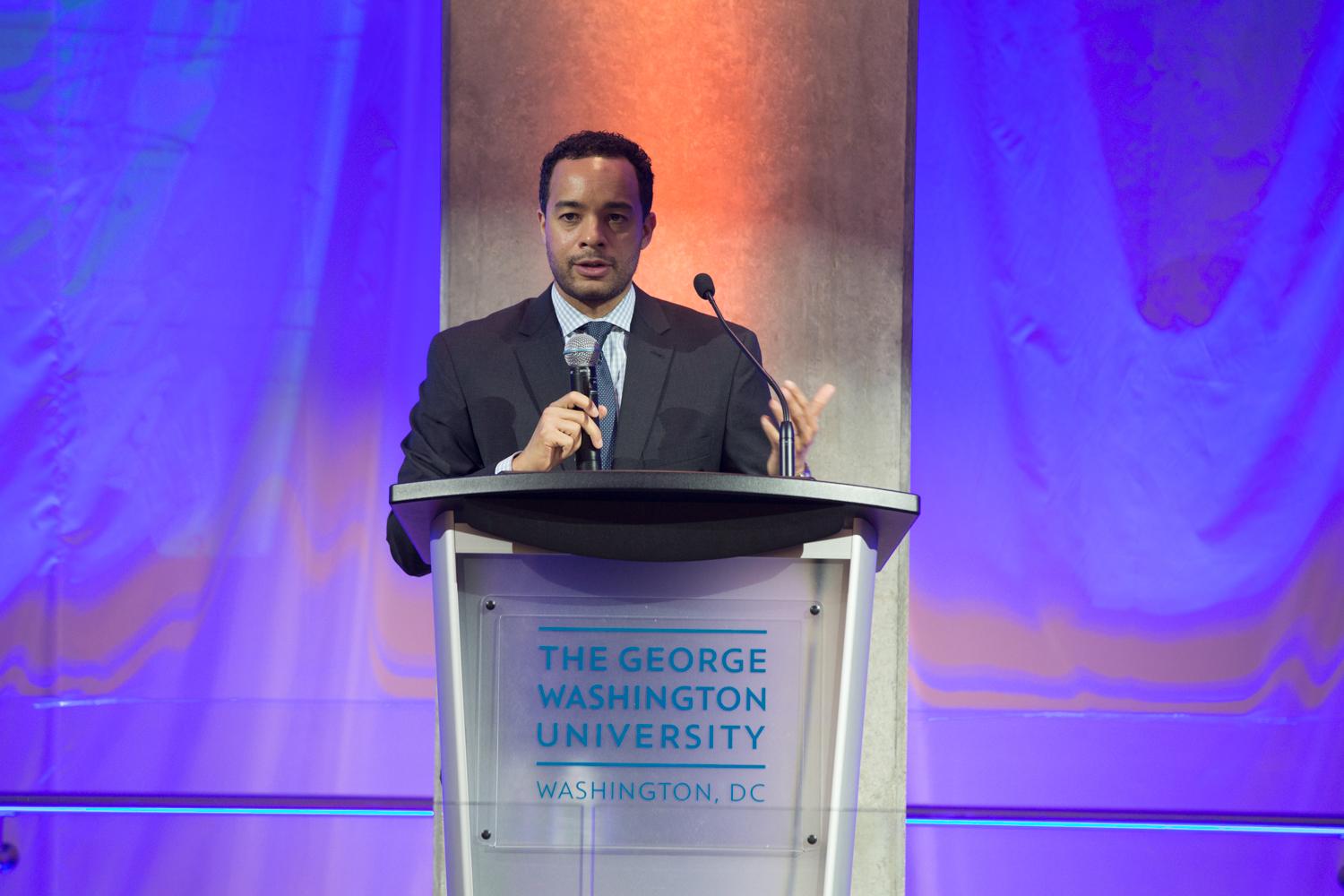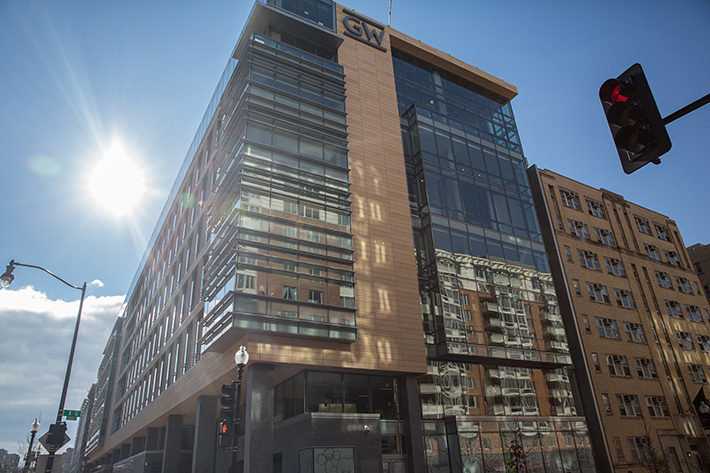The official opening of Science and Engineering Hall, a decade in the making, came when green and red lasers beamed across the building’s grand lobby Wednesday as more than 300 guests gasped in awe.
From the administrators, faculty and donors who eagerly anticipated this day, to the freshmen who will inhabit the building for the next four years, the opening ceremony marked a turning point for the entire George Washington University community.
“With this new building, we are indeed making history,” said George Washington President Steven Knapp. “I remain confident that this is the largest science and engineering building that will ever be built within six blocks of the White House.”
Dr. Knapp cited a 2006 study from the National Academy of Sciences, which argued that American students were falling behind in STEM disciplines, and that the gap in their performance, compared to their peers in other countries, posed a threat to the U.S. economy. Since then, some experts have argued that the report paints a more pessimistic picture than the numbers warrant.
“So it’s debatable, it seems, whether U.S. high schools, colleges and universities are producing enough scientists and engineers to fill the needs of U.S. employers,” he said. “But what is not debatable is the need, both nationally and globally, for citizen leaders who understand how science works. The most pressing issues that face us in the world today all involve science and technology.”
And a university, Dr. Knapp said, only has credibility in that realm if it enables students to “share the excitement of contact with scholars working at the forefront of their disciplines.”
When SEH planning began 10 years ago, GW had not built a new research facility on its Foggy Bottom Campus since Ross Hall’s completion in 1973.
Chemists competed for room in cramped, carpeted laboratories. Engineers turned Tompkins Hall storage rooms into makeshift workspaces. Researchers outsourced projects to universities with more advanced facilities.
“But those aren’t the reasons why you do something like this. We needed something more compelling,” Board of Trustees Chair Nelson Carbonell said, recalling the Board’s preliminary SEH discussions. “We realized that GW had been a place that had a history of science that was really unparalleled, at least in this area, and perhaps in many other places in the world. And we needed to retake that place.”
Indeed, Charles Monroe, the inventor of smokeless gunpowder , headed GW’s Chemistry Department at the end of the 19th century, and world-renowned physicist George Gamow helped develop the Big Bang Theory at the university in 1934.
More than a half a century later, GW has climbed into the top tier of research schools, as counted by the Carnegie Classification of Institutions of Higher Education.
Now, SEH allows the university to expand its research profile even further, with 500,000-square-feet of teaching and research space, state-of-the-art labs and equipment and a transparent, open layout that encourages cross-disciplinary collaboration.
At the opening ceremony, National Academy of Sciences President Ralph Cicerone noted that faculty depend heavily on obtaining external researching funding.
“The facilities provided at GW, here in SEH, will enable GW researchers to compete more effectively for such grant funds,” he said. “The remarkable progress of GW in the quality of its instruction and research over the last few years is a great achievement.”
A statement from D.C. Mayor Muriel Bowser (D), read by Deputy Mayor for Planning and Economic Development Brian Kenner, applauded the university’s largest ever construction project.
“I am pleased that GW is making a significant and visible investment in the sciences and engineering,” the statement said. “This advanced facility will support our growth as a city of discovery and innovation and attract more research funding, create more jobs and generate the next generation of STEM innovators.”
Alumni, donors and industry partners received a taste of the building's features during tours of laboratories where students and faculty explained their research.
Trustee Madeleine Jacobs, B.S. ’68, former CEO of the American Chemical Society, has toured the building four times. “I can’t get enough. Every time I come here I learn something new,” she said. “And I’m even more astonished and excited for what this is going to mean for students at this university.”
As an undergraduate studying chemistry at GW, undergraduate research was never a possibility, she said after her most recent tour Wednesday.
“There simply wasn’t enough lab space,” she said. “This building gives undergraduates the set up to do really meaningful research that is going to make a huge difference in their careers.”
For Adedayo Jobi-Odeneye, a senior studying biomedical engineering who spoke at the ceremony, SEH is her “home,” one common place where she and her classmates can study, learn and design.
“And if you’re lucky,” she said, “you even get to see the sunrise.”


